How Wingnuts Made Violent Extremism the New Normal
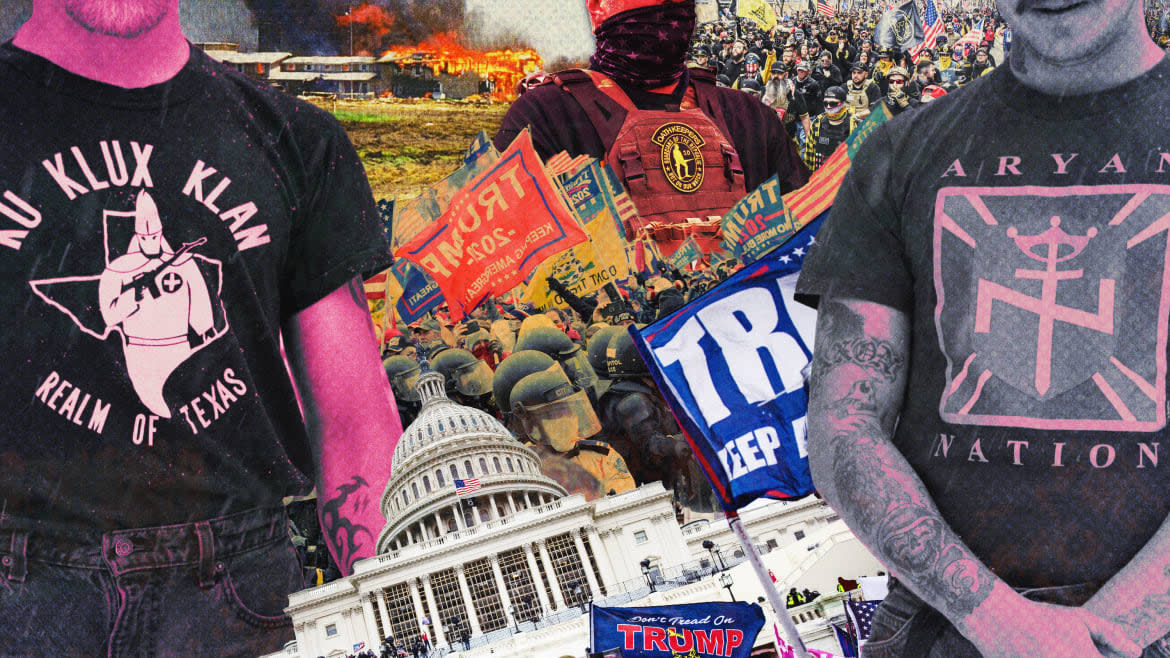
- Oops!Something went wrong.Please try again later.
- Oops!Something went wrong.Please try again later.
I have been a witness to this march for over forty years. As a young newspaper reporter and editor working in the northern Idaho Panhandle in the 1970s and ’80s, I was present when the Aryan Nations moved its operations from Southern California to a small town just a little south of where I worked called Hayden Lake, and then proceeded to both terrorize the local population with waves of violent hate crimes perpetrated by the neo-Nazis who moved there with them, as well as to slowly alter the local demographics by attracting scores of fellow far-right extremists to the region, where they spread their politics of hate and division to their new neighbors.
What made the spread of these toxic extremists into the host community so seamless, I came to realize, was their seeming normalcy. There were always the expected Hitler devotees who donned brown shirts and swastika armbands, as well as tattooed skinheads with threatening demeanors, among the participants at the annual Aryan Congresses in Hayden Lake. But the large majority of the people I would interview at these gatherings looked and dressed like anyone else in Idaho at the time. More importantly, I came to recognize that their views were only extreme variations of ideas and beliefs—about the federal government or education or minority and women’s rights or homosexuality—that I knew were already common among my conservative Idaho neighbors, particularly among those already immersed in the far-right John Birch Society, which had long been a significant political presence in the state. They were only a few turns of the paranoia ratchet away from being the same.
The beliefs practiced at the Aryan Nations—whose official name was the Church of Jesus Christ Christian—are those of a racist sect called Christian Identity. It teaches that white people are the true Israelites, and that Jews are literally the descendants of Satan. Non-whites, in their belief system, are soul- less “mud people.” And its adherents preach that America, including its government, is in the grip of a satanic cabal that uses abortion as a kind of sacrifice to the devil. But in the context of recruitment, believers frequently muted their more bigoted beliefs and emphasized their hatred of modern secular society.
What Can You Do When Someone in Your Family Goes All QAnon?
A number of people were attracted to the Aryan Nations less for their open bigotry than for their shared white-hot hatred of “decadent” liberal democracy and the U.S. government. Some of these were adherents to Gale’s Posse Comitatus ideology, which preached a kind of radical localism based on a twisted (as well as both anti-Semitic and racist) interpretation of the Constitution, claiming that the federal government’s powers—especially regarding civil rights laws—were extremely limited, that county sheriffs were the supreme law of the land, and that the FBI and other federal departments were illegitimate entities.
Others were people who had deeply held apocalyptic religious beliefs and considered the government a tool of the devil. Randy Weaver and his family, hyper-religious transplants from Iowa who sought refuge in the deep-forested hills of the Idaho Panhandle, were just such eventual converts. Weaver subsequently became embroiled in a criminal investigation into the gun-running activities of another family they met at Hayden Lake and ended up in 1992 engaging the FBI in an armed standoff at his home on Ruby Ridge in which his wife, Vicki, and son, Sammy, were killed. It fit the long tradition I had witnessed in which converts’ absolute devotion to extremist beliefs only ended in tragedy and misery for everyone involved.
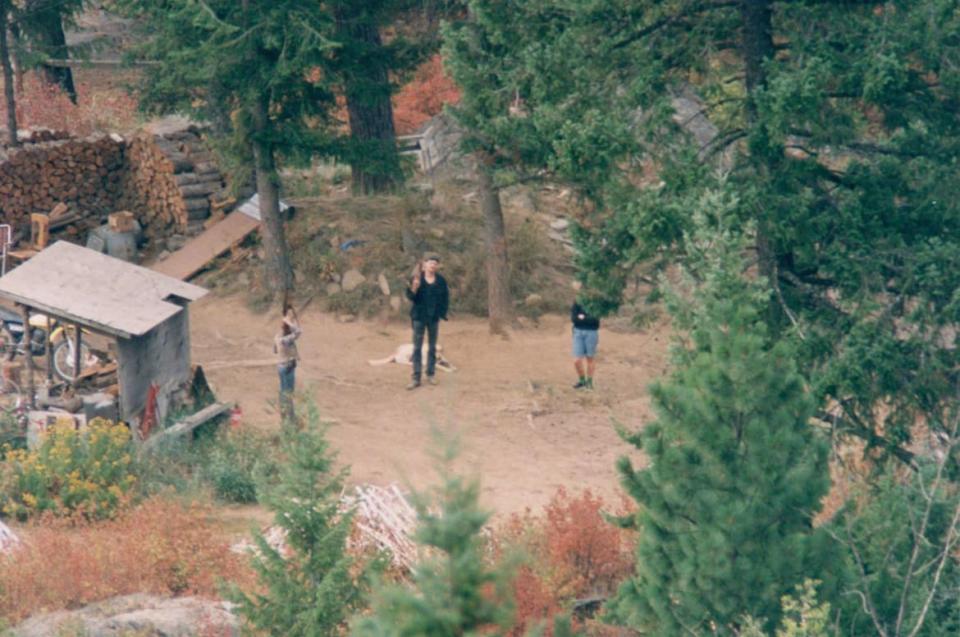
Surveillance image of Sammy Weaver (left), Kevin Harris (center), Sara Weaver (right) near the Randy Weaver cabin before the Ruby Ridge standoff.
That incident inflamed the radical right and spurred its leaders to action. Less than two months later in Colorado, a collection of white supremacists, gun-rights extremists, neo-Nazis, and Klansmen convened to discuss setting aside doctrinal differences and focusing on creating an armed response to federal “tyranny.” The end result was what became broadly known as the “militia movement,” although its own adherents (some of whom didn’t join militias but instead pursued “constitutionalist” legal theories, declaring themselves “sovereign citizens” immune from federal and state laws) called it the “Patriot movement.” After the misbegotten 1993 federal standoff at the Branch Davidian church near Waco, Texas, in which 76 people were killed when the cult leader set the building afire, the idea began to spread like wildfire.
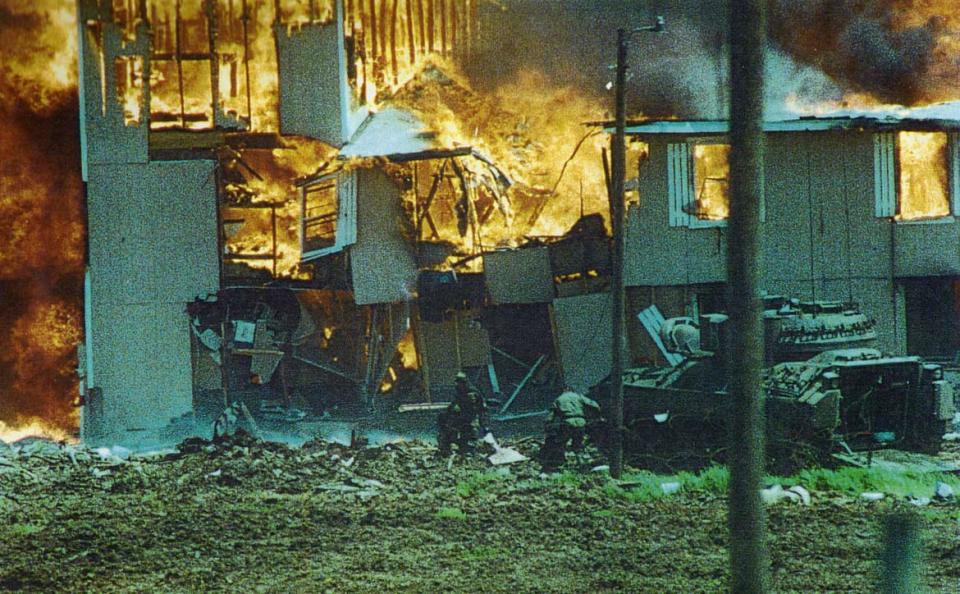
"Two FBI agents rescue Ruth Riddle from the burning Branch Davidian building.
I began reporting on their organizing activities in the Pacific and inland Northwest as a subject for my nascent freelance work. I chose to begin writing about them partly as a practical matter: My experience told me that if I wanted to tackle a subject that would produce a steady stream of news stories, right-wing extremism was an excellent bet, since over my years reporting and editing, it was an endless wellspring of human misery, social disruption, and frightening violence—the kind of behavior that always makes news.
After a young “Patriot” named Timothy McVeigh, out for revenge for the Ruby Ridge and Waco incidents, set off a truck bomb outside the federal building in Oklahoma City in April 1995, killing 168 and maiming hundreds more, it became clear to me that the movement was toxically dangerous: an existential threat not just to innocent people in its vicinity, but to democracy itself. The fascist beliefs and attitudes that informed the founding of the Patriot movement were not merely strands woven into its mainstream-friendly facade, but the foundational blocks hiding beneath their jingoistic enterprise. What was striking even at the time was how frequently their rhetoric waded into open sedition, calling for the overthrow of the “New World Order” government—even while claiming the mantle of “true” patriotism. It never went away.
So in the aftermath of the bombing, I decided to make right-wing extremism my primary beat, the focus of my work, and the subject of extensive research in the years that followed, which included conducting as much on-the-ground coverage and in-person interviews as possible. Mostly, I ended up monitoring and tracking the extremists’ relentless activities over the ensuing years, leading me to realize eventually one core truth about them: They never, ever give up. They may go into hiding or keep lower profiles, but they are relentless in finding new ways to insinuate their toxic beliefs within the mainstream of American politics.
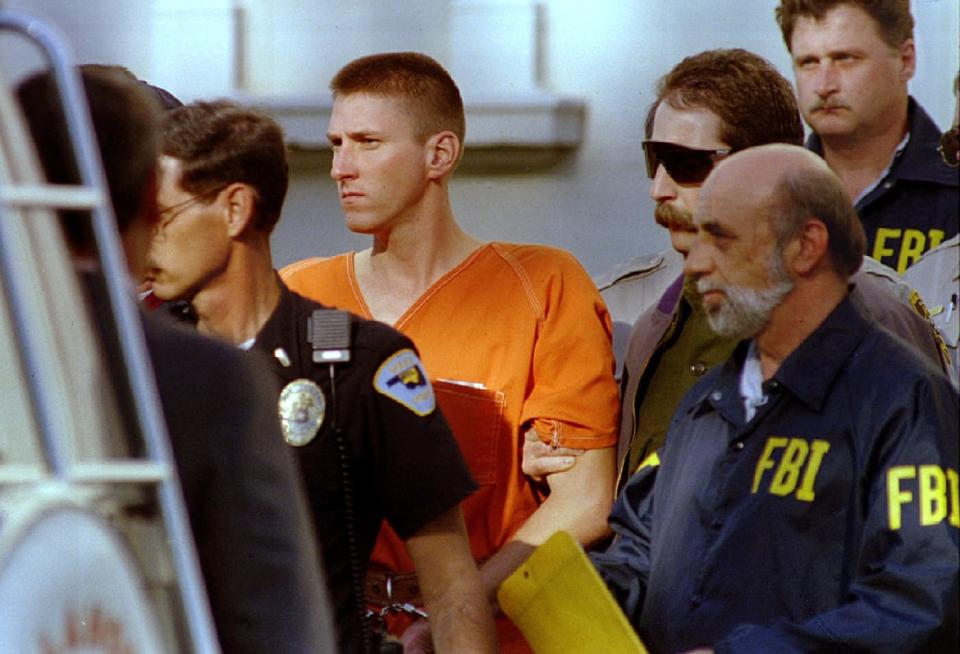
Timothy McVeigh is escorted from the Noble County Courthouse in Perry, Oklahoma by FBI agents and local police, April 21, 1995.
There was a brief downturn in the Patriot movement that began in 2000, when the “Y2K apocalypse” that many of them had furiously hyped in the years prior failed to materialize as promised on January 1 of the new millennium. The election of a Republican president later that year also seemed to lower their fervor, which initially had centered heavily around gun rights. But by 2003, a number of them had found a new cause célèbre around which to organize: immigration.
So along the southern U.S. border, “Patriot” militia groups spouting far-right nativist rhetoric began forming, running vigilante “border watches” in sparsely populated desert lands, hoping to intercept “illegals” as they entered the country. The best known of these outfits called itself the Minutemen, and an April 2005 “border watch” intended to attract participants from around the country was heavily promoted on national networks like Fox News and covered by every major mainstream outlet, which treated their claims—including their insistence that they were only “patriotic citizens” out to defend the country from a perceived threat (of brown people)—credulously. However, within a few years, much of the energy around these new border militias began to trail off, especially as groups like the Minutemen crumbled apart in a wave of criminality (including the murders of a family living in a border town, a tragedy that I covered extensively) and financial malfeasance.
By 2008, however, these protofascist elements had found a new focus: the election of a Black president. Suddenly, the hysterical fears about gun rights, fueled by a raft of fresh conspiracy theories, and paranoid claims about “government tyranny” were being circulated widely—and a fresh wave of militia organizing began. In the first year of Barack Obama’s presidency, the numbers of militia groups had nearly quadrupled from their 2007 numbers, from 131 to 512; by 2011, they had peaked at 1,360.
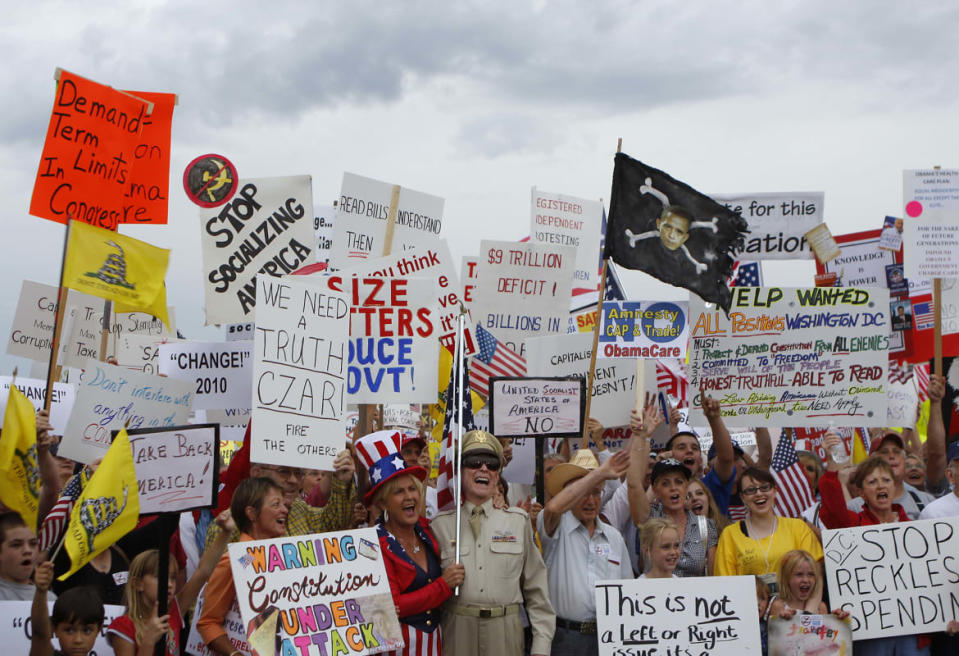
People hold signs during a tea party protest in Flagstaff, Arizona August 31, 2009.
Much of this organizing revolved around the Tea Party movement, which had arisen early in Obama’s tenure as a mobilizing reaction against his presidency—particularly any of his policy initiatives, such as healthcare reform—but which in short order became a conduit for reviving Patriot movement ideology and giving it fresh life within the conservative mainstream. It only took a few twists of the paranoia ratchet to get there: Within short order, the Tea Party was overwhelmed with “constitutionalists” and militia advocates like the Oath Keepers, fueled with fresh new conspiracy theories ranging from claims about Obama’s birth certificate to suggestions that normal Army exercises were preparations to round up conservatives into concentration camps. Far-right ideology bubbled up along with it: At one Tea Party event I covered in Montana, one of the exhibitors was selling copies of Hitler’s Mein Kampf.
Simultaneously, the emergence of wide-open internet platforms, particularly social media and chat room sites, presented a fresh opportunity for dedicated white supremacists to spread their ideology into the mainstream, primarily by recruiting vulnerable and impressionable young white males simmering with resentments, particularly against women, LGBTQ folk, and ethnic/racial minorities. The emerging movement called itself “the alt-right,” and, like the Tea Party, its alternative universe was a seething cauldron of conspiracism—especially the antisemitic kind—and venomous hatred.
All of these protofascist elements finally found their long-missing key ingredient—their authoritarian need for a “glorious leader” around whom they could realize their dream of returning to national power—in 2015 with the ascendance of Donald Trump to the top of the Republican presidential ticket. The broad range of elements of the American protofascist right—the Patriots, the white nationalists, the conspiracists, and their mainstream enablers—all congealed in unrequited support for Trump and played a powerful role in his ultimate election to the presidency. I detailed all of these events in my 2017 book, Alt-America.
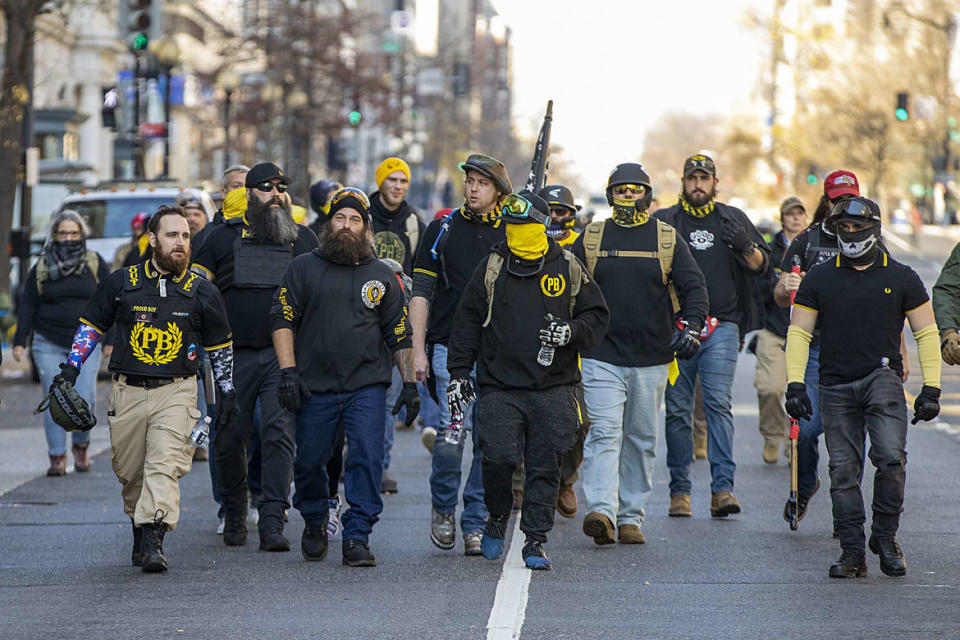
Members of the Proud Boys gather in support of President Donald Trump and in protest the outcome of the 2020 presidential election near freedom plaza on Dec. 12, 2020 in Washington, DC.
I knew on the night that Trump was elected that life in America would never be the same—and particularly not for someone in my line of work. I knew that he had already begun prying the lid off the Pandora’s box that is our national id—the chest full of our darkest impulses—and that his ascendance to the White House would remove the lid altogether, and all the demons held therein would come flying out into our midst. I was not shocked when, in the first two months after his election, hate crimes spiked to previously unseen levels.
In the succeeding years, Trump would unleash a politics of menace and intimidation on the national landscape unlike anything seen since the Klan years. As a correspondent for the Southern Poverty Law Center, I was there to report on much of it. On the night of Trump’s inauguration, I witnessed an anti-fascist being shot by alt-right fans of Milo Yiannopoulos on the University of Washington campus. Over the course of the ensuing weeks and months, I was present as gangs of street brawlers who gave themselves names like Patriot Prayer and the Proud Boys organized riots in West Coast urban centers like Berkeley, Portland, and Seattle, using the pretext of defending “free speech” to deliberately create scenes of violence for which they came fully prepared. The trend spread to other locations and culminated in the lethal Unite the Right march in Charlottesville, Virginia, in August 2017, at the end of which a neo-Nazi rammed into a crowd of counter-protesters, killing one and maiming dozens.
Even after that tragedy, the neofascist Proud Boys and their like-minded thugs continued to organize marches, ranging from their epicenter in Portland to Providence, Rhode Island, and dozens of points in between. I covered nearly two dozen of these events over three years and observed their unfolding strategy for simultaneously intimidating the general public while generating a phony narrative blaming leftists—particularly anti- fascists and Black Lives Matter—for the brutality they themselves inflicted on these cities. Even more disturbing was how I witnessed their politics seeping into the mainstream, drawing Republican Trump fans and police officers alike into their web of extremism.
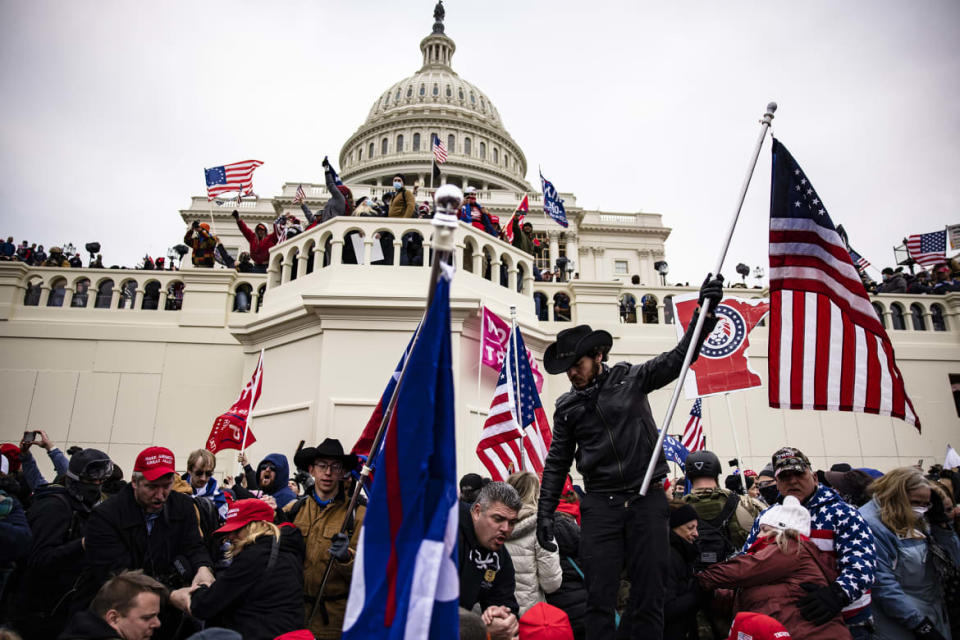
Pro-Trump supporters storm the U.S. Capitol following a rally with President Donald Trump on January 6, 2021 in Washington, DC.
I paid close attention to their rhetoric: the mounting eliminationism directed not just at “Antifa” and BLM but anyone they deemed “Communist”—a term of demonization so flexible that it included mainstream liberals like Joe Biden and Kamala Harris. I paid attention to their willingness to bring violence against peaceful liberal politicians on the campaign trail. And I listened as they gobbled up Donald Trump’s claims about looming election fraud in the 2020 election and were heartened by his refusal in a debate with Biden to say whether he would hand over the presidency peacefully. I especially noticed how they were positively electrified by his shout-out to the Proud Boys in that same debate, telling them, “Stand back and stand by.”
So when Trump in fact lost, I knew that at some point he would gather these forces in Washington, D.C., to prevent his removal from office. And by late December, it had become plain that January 6, 2021, would be the day. Reporting for the progressive news website Daily Kos, I warned readers that extreme violence directed at officials in Washington was coming, as did other journalists who could see the same black clouds taking shape. Unfortunately, those warnings did not reach the higher echelons of the national media, nor the law-enforcement sectors that would nonetheless wind up saving democracy on that day despite being overwhelmed.
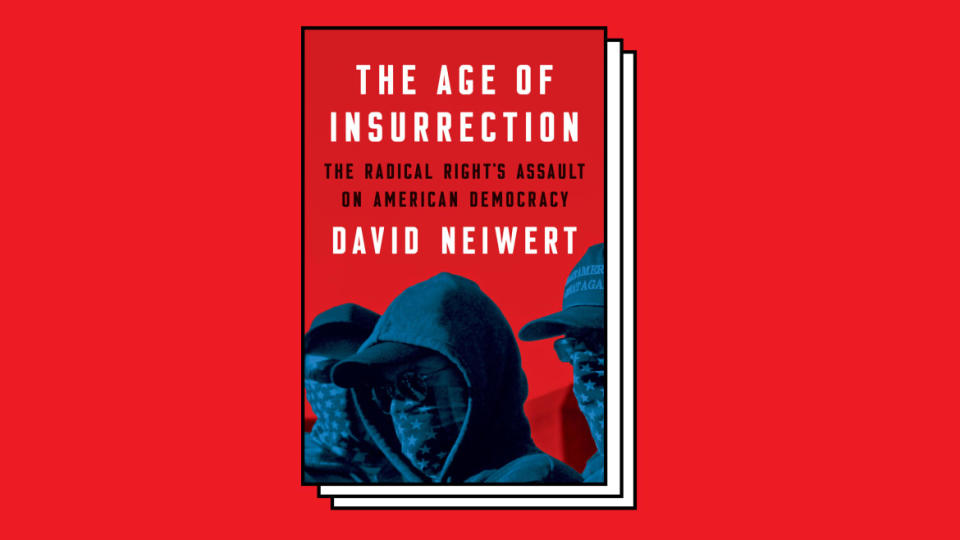
There was a brief moment, in the days immediately following the insurrection, when there was an opportunity by Republicans to bring the nation back from the brink—to recoil in horror at the violent attack on the backbone of our democracy, the peaceful transfer of power; to renounce the extremism that had overwhelmed their party both before and during the Trump years, to embrace their longtime role as a viable partner in democracy. But within a matter of days—especially when confronted with the painfully obvious need to impeach Trump for inciting the mob and attempting a coup, which should have been understood as a duty—they promptly regressed into the cultish authoritarianism of Trumpism, refusing his impeachment and dismissing the insurrection as a mere protest that had “gotten out of hand.”
Flynn Group Recruits Cops, Vets for ‘One More Mission’—to Watch Election Sites
So rather than breaking the fever of right-wing extremism, January 6 became a starting point for a new age of American politics: an age in which insurrection is celebrated, seditionists are defended as “patriots,” and the politics of menace and violence are woven into our everyday discourse and interactions. It will be an age in which smaller insurrections—directed at state legislatures, school boards, city councils, even public libraries—conducted by gangs of threatening Proud Boys, Patriots, and Christian nationalists will become common and even ordinary. It will be an age when random terroristic violence will strike with frightening regularity. Most of all, it will be an age when the forces of the radical right work feverishly to impose their radical antidemocratic agenda on the nation and impose a system of plutocratic authoritarianism that will rob citizens of their rights and, if their eliminationist rhetoric is to be believed, their lives.
The Age of Insurrection is intended to help ordinary Americans—the ones who still believe that our democratic system is the best guarantor of our rights and freedoms and well-being—understand the nature of what it is we’re up against: the ideologies and motivations and strategies of the ongoing far-right insurgency. January 6 demonstrated that the threat to democracy by these forces is very real, and its aftermath has manifested that the problem is not going away, but rather redoubling its forces in preparation for a culminating victory. Herein, I hope, you will find a toolbox containing the knowledge we all will need to deny them that.
Excerpted from The Age of Insurrection, by David Neiwert; published by Melville House, 2023.
Get the Daily Beast's biggest scoops and scandals delivered right to your inbox. Sign up now.
Stay informed and gain unlimited access to the Daily Beast's unmatched reporting. Subscribe now.

